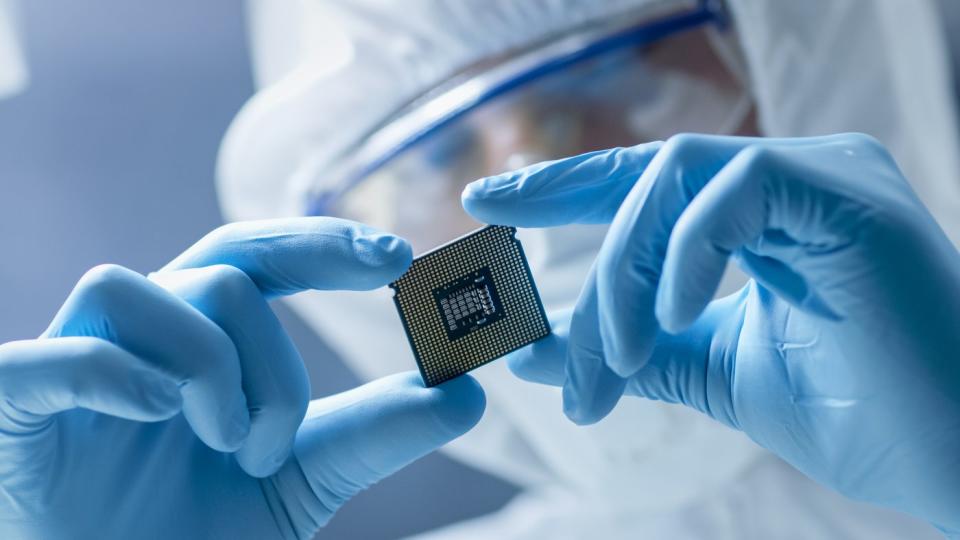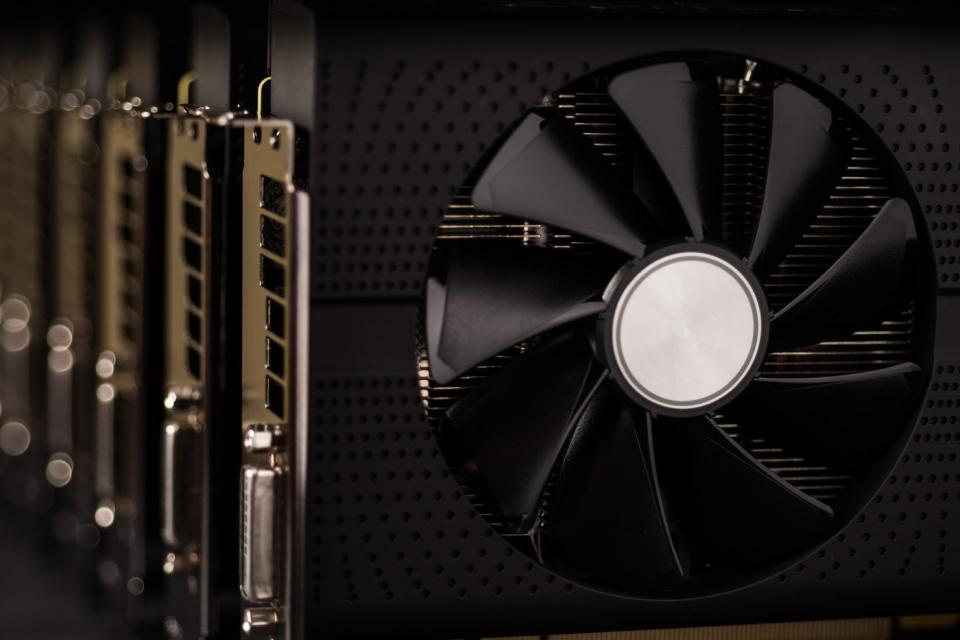2 Semiconductor Stocks to Buy Hand Over Fist in 2024 and 1 to Avoid Like the Plague

Wall Street has been nothing short of a roller-coaster ride over the past four years. Since this decade began, the stock market's three major indexes have vacillated between bear and bull markets on a couple of occasions.
Despite this volatility, the outlook for the semiconductor industry remains as bright as ever. Although forecasts vary wildly, depending on the source, one relative constant is the expectation that global semiconductor revenue will top $1 trillion, annually, by the turn of the decade. That's a lot of money to be divvied up among dozens of established and promising businesses.

Image source: Getty Images.
While some semiconductor stocks stand out as phenomenal values given their future growth prospects and competitive advantages, others appear priced for perfection in an imperfect and ever-evolving industry.
What follows are two semiconductor stocks that are surefire buys for the new year, as well as one high-flying chip stock investors may want to steer clear of.
Semiconductor stock No. 1 to buy hand over fist in 2024: Intel
Shares of central processing unit (CPU) juggernaut Intel (NASDAQ: INTC) are higher by nearly 62% on a year-to-date basis through Dec. 8. While it's not the jaw-dropping value it was a year ago, there's plenty of reason for patient investors to be excited about its steady transition to a more diversified and higher-growth operating model.
It's no secret to anyone who owns shares of Intel or tracks it on their watchlist that Advanced Micro Devices (NASDAQ: AMD) has been "chipping" away at its CPU lead. AMD has been successfully siphoning away share in personal computers (PCs) and data centers, which clearly has Wall Street concerned.
There also looks to be some skepticism on Wall Street regarding Intel's late entry into the artificial intelligence (AI) arena. Intel laid out plans to debut its Falcon Shores graphics processing unit (GPU) for AI-accelerated data centers in 2025. In the meantime, Nvidia's (NASDAQ: NVDA) GPUs have run away with well over 80% of high-compute, data-center market share -- for the time being.
Despite skepticism surrounding Intel's near-term outlook, the company's stock looks like a bargain given the growth opportunities that lie ahead.
For example, the company's introduction of Falcon Shores by mid-decade should allow Intel to gobble up meaningful share in AI-accelerated data centers. Nvidia's growth has predominantly come on the heels of pricing power and GPU scarcity. Even with increased production in the upcoming year, there will be plenty of market share in play for 2025 and beyond. If Falcon Shores can be competitive with AMD's MI300X AI-GPU and Nvidia's A100 and H100 GPUs, there's no reason it can't snag meaningful share.
Additionally, Intel is diversifying its revenue channels by building out its foundry segment. It's spending approximately $20 billion to open two chip-fabrication facilities in Ohio next year, with a third plant set to open in Germany later this decade. By 2030, Intel could grow into the world's No. 2 chip foundry, which would almost certainly lift the company's operating margin.
Don't overlook Intel's still-dominant legacy segments, either. While PCs aren't the growth driver they once were, Intel is still the undisputed kingpin in CPUs for PCs and traditional data centers. These segments will remain cash cows for Intel, providing the company with ample cash to grow its foundry segment and invest in high-growth initiatives.
Semiconductor stock No. 2 to buy hand over fist in 2024: Qorvo
The second semiconductor stock that can confidently be bought hand over fist by investors in the new year is Qorvo (NASDAQ: QRVO).
Arguably the biggest knock against Qorvo is the expectation that global-smartphone sales will decline for a third consecutive year to approximately 1.34 billion units, which is a level not seen since 2014. Qorvo, which makes an assortment of wireless solutions, generated around three-quarters of its sales from smartphones/cellular products during its September-ended quarter.
Although tepid smartphone demand in 2023 is a tangible concern, there are a handful of reasons to be excited about the company's future.
To begin with, I believe the decline in smartphone sales will abate in the coming quarters. The expansion of 5G wireless networks worldwide should lead to a sustained smartphone upgrade cycle. Qorvo is responsible for some of the wireless solutions that make next-generation smartphones tick.
To add to the above, Qorvo has a very close working relationship with Apple, the largest smartphone company by market share in the United States. Apple's innovation has endeared generations of consumers to its products. As long as Qorvo components remain a staple in the iPhone, there's no reason to believe the company's bottom line won't grow over time.
But the juiciest growth opportunity for Qorvo is liable to come from its ancillary operations. In particular, Qorvo's wireless connectivity and power-management solutions could become staples in next-generation vehicles, including electric vehicles. As developed countries aim to minimize their carbon footprints, this shift to technology-enhanced, cleaner vehicles will be a tailwind for the company.
Lastly, Qorvo stock is cheap. Shares are currently trading for less than 14 times forward-year earnings, with earnings per share (EPS) expected to nearly double over the next four years.

Image source: Getty Images.
The semiconductor stock to avoid like the plague in the new year: Nvidia
However, not all semiconductor stocks are necessarily going to be winners in the new year. The one I'd strongly suggest avoiding like the plague in 2024 is none other than the hottest megacap company on the planet, Nvidia.
As noted, Nvidia's A100 and H100 GPUs account for the lion's share of AI-focused GPUs being utilized in high-compute data centers. According to analysts at Citigroup, Nvidia is positioned to command more than 90% of the AI-GPU market in 2024. With Taiwan Semiconductor Manufacturing increasing its chip on wafer on substrate capacity, Nvidia shouldn't have trouble meeting the needs of more of its enterprise customers moving forward.
But it's important to recognize that a lot of Nvidia's AI data-center gains this year were a function of A100 and H100 GPU scarcity and pricing power. Through the midpoint of Nvidia's fiscal year, which began on Jan. 30, 2023, Nvidia's cost of revenue actually declined as its sales soared. This is a clear indication that scarcity for its in-demand GPUs drove its growth.
Normally, strong pricing power is a welcome sight for a business and its investors. But this isn't going to be the case for Nvidia. With its own production ramping up, coupled with the arrival of AMD's MI300X GPU, it'll be considerably easier for businesses to get their hands on AI-accelerated GPUs in 2024 (and beyond). Nvidia will, undoubtedly, move more units, but its gross margin is going to suffer as its pricing power fades.
To add, Nvidia is facing regulatory pressure at home. U.S. regulators recently clamped down on AI chip exports to China, which is responsible for around 20% to 25% of the company's annual sales. Though Nvidia did develop less powerful versions of its leading A100 and H100 GPUs for export to the world's No. 2 economy, these restrictions could put a ceiling on Nvidia's near-term growth prospects.
History isn't on Nvidia's side, either. Every next-big-thing investment trend over the past 30 years has worked its way through an initial bubble phase, and AI is unlikely to be the exception to the rule. By the time Intel enters the arena with Falcon Shores in 2025, the industry will have somewhat matured. However, 2024 could be a difficult year for AI stocks if enterprise GPU demand fails to live up to investors' lofty expectations.
More From The Motley Fool
Citigroup is an advertising partner of The Ascent, a Motley Fool company. Sean Williams has positions in Intel and Qorvo. The Motley Fool has positions in and recommends Advanced Micro Devices, Apple, Nvidia, and Taiwan Semiconductor Manufacturing. The Motley Fool recommends Intel and Qorvo and recommends the following options: long January 2023 $57.50 calls on Intel, long January 2025 $45 calls on Intel, and short February 2024 $47 calls on Intel. The Motley Fool has a disclosure policy.
2 Semiconductor Stocks to Buy Hand Over Fist in 2024 and 1 to Avoid Like the Plague was originally published by The Motley Fool
